Well, after a bit of head-scratching and some experimentation, I have achieved my objective of creating a hook-and-loop coupling with delayed action uncoupling. However, I'm not sure how practicable it is (more later).
The loops are as before but the hook has been modified to include a forwards facing larger hook behind the normal hook. I'll call this the "delay latch".
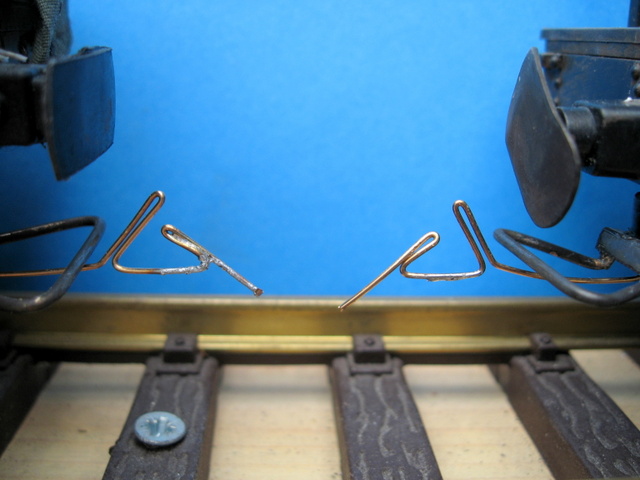
- IMG_8395.JPG (94.96 KiB) Viewed 5875 times
.
The coupling hooks couple-up in the usual way. Push one or both wagons together ......

- IMG_8395-labelled.jpg (63.13 KiB) Viewed 5875 times
.
... and the hooks latch on to the loops and away we go.
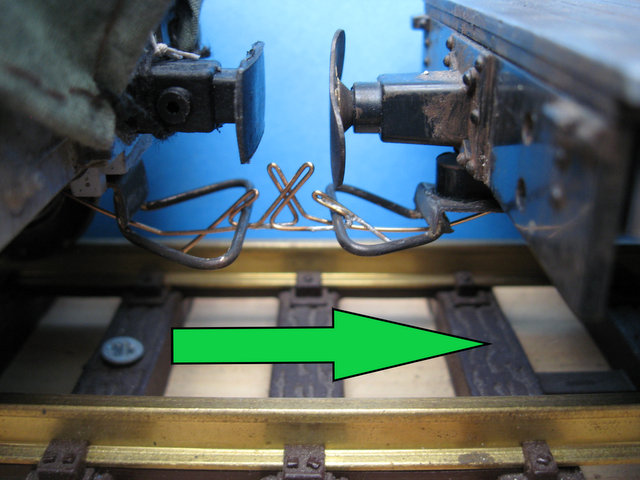
- IMG_8397-labelled.jpg (74.63 KiB) Viewed 5875 times
.
To uncouple, the wagons are propelled backwards (or one is propelled backwards and the other is stationary).

- IMG_8398-labelled.jpg (77.09 KiB) Viewed 5875 times
.
The couplings are then pushed downwards to disengage the hooks from the loops. At the same time, the 'delay latches' on the hooks force the wagons apart slightly as they meet the loop on the other wagon.

- IMG_8399-labelled.jpg (74.57 KiB) Viewed 5875 times
.
The uncoupler is removed and the wagons continue to be propelled backwards. The delay latches are now the other side of the loops on the opposite wagons.
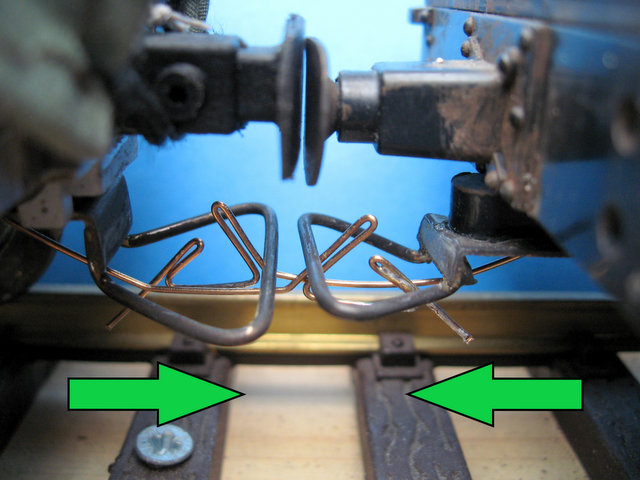
- IMG_8401-labelled.jpg (74.61 KiB) Viewed 5875 times
.
When the wagons are pulled apart (or one is stationary and the other is pulled away from it), the delay latches slide under the loops, .......
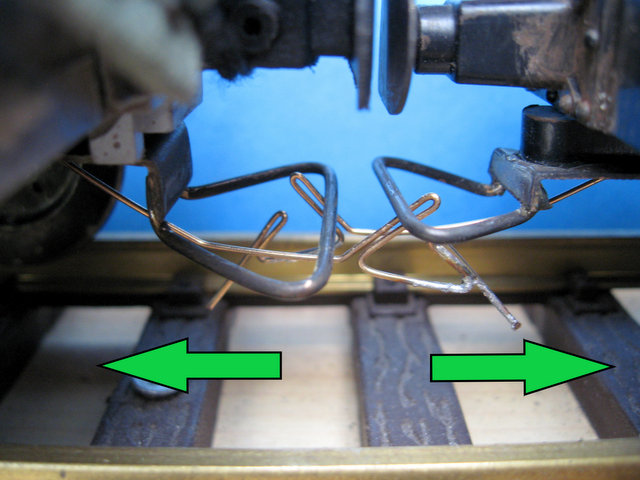
- IMG_8402-labelled.jpg (72.32 KiB) Viewed 5875 times
.
...... preventing the coupling hooks re-engaging with the loops.
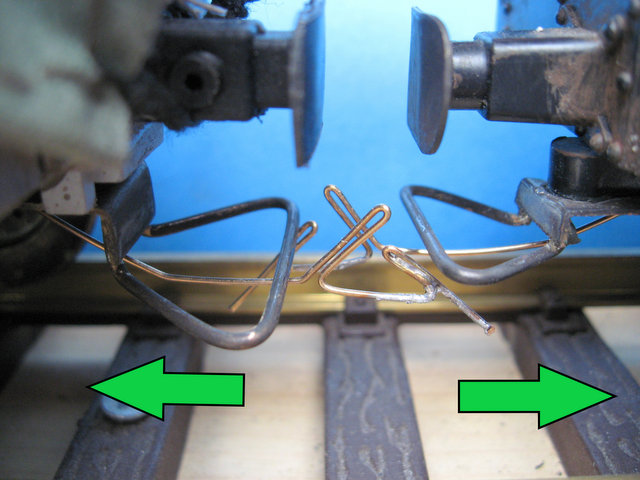
- IMG_8403-labelled.jpg (72.64 KiB) Viewed 5875 times
.
Thus the wagons are uncoupled when they are pulled apart at any point after they have been uncoupled.

- IMG_8404-labelled.jpg (58.14 KiB) Viewed 5875 times
.
I have tried using magnets to do the uncoupling by soldering steel droppers to the underside of the hooks. However, I've not found magnets which are sufficiently strong to pull the hooks down and keep them held down while the delay latches come into force. I might need longer magnets.
Whilst all this is fine in theory, in reality, it's tricky getting the delay latches to work reliably. If the wagon being uncoupled is too light when the hooks are depressed the wagon springs away under the pressure from the delay latches and then when the propelling is continued the coupling hooks re-engage. If the wagon to be uncoupled is too heavy (eg if there are several other wagons behind it), then it's difficult to push the hooks down as the delay latches have to force the wagons apart slightly to work.
So theoretically, the delay latches are a workable concept - but in practice they are not really viable. If I could get the delay latches to hinge upwards somehow and then drop down again to cover the hook then it would work - but it will make the hooks too complicated to construct and might end up interfering with the coupling and uncoupling process.
So - I'll stick with the status quo - ie uncoupling wagons at each location where I want them to remain.
Rik




